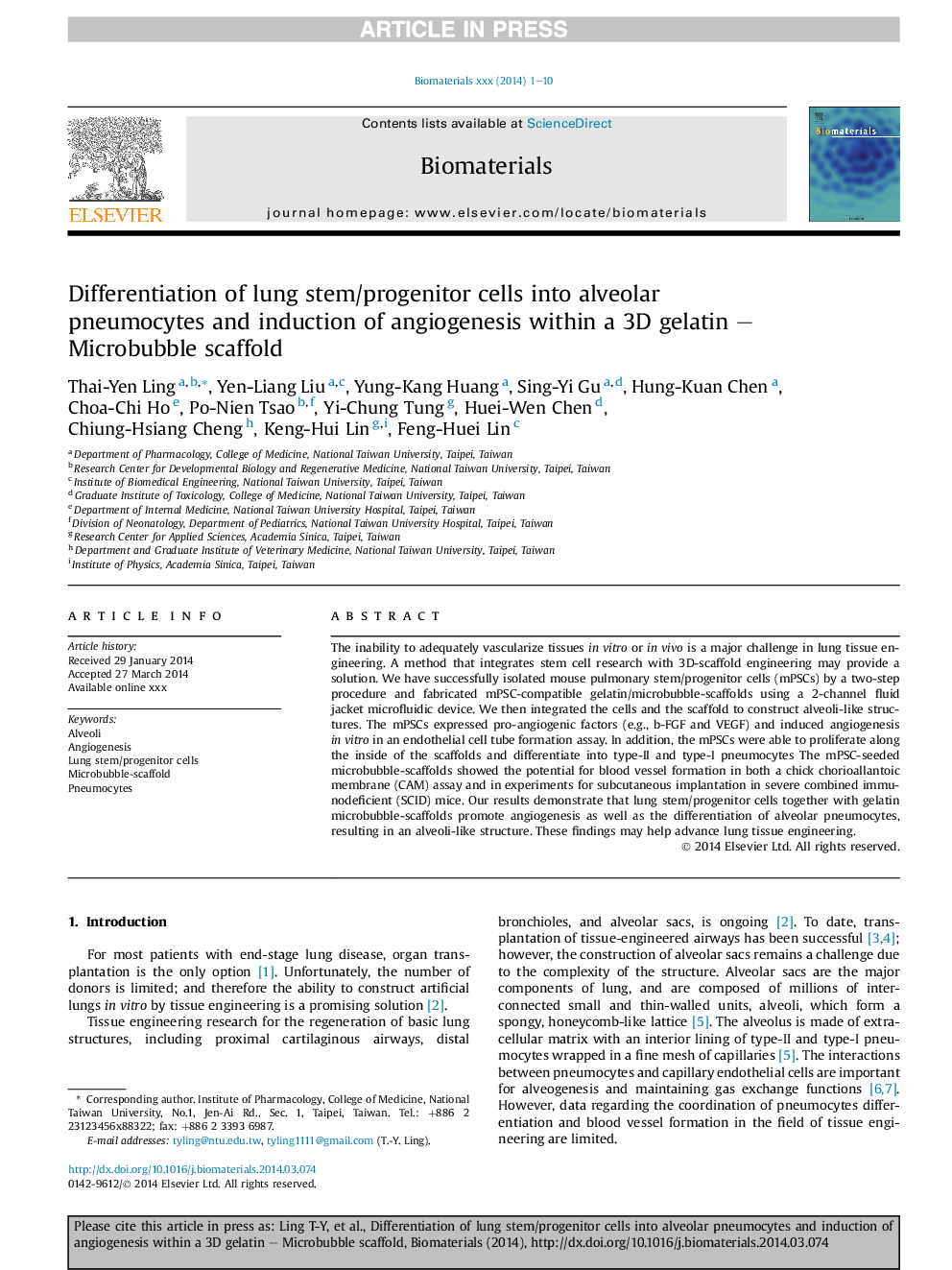| Article ID | Journal | Published Year | Pages | File Type |
|---|---|---|---|---|
| 10227707 | Biomaterials | 2014 | 10 Pages |
Abstract
The inability to adequately vascularize tissues in vitro or in vivo is a major challenge in lung tissue engineering. A method that integrates stem cell research with 3D-scaffold engineering may provide a solution. We have successfully isolated mouse pulmonary stem/progenitor cells (mPSCs) by a two-step procedure and fabricated mPSC-compatible gelatin/microbubble-scaffolds using a 2-channel fluid jacket microfluidic device. We then integrated the cells and the scaffold to construct alveoli-like structures. The mPSCs expressed pro-angiogenic factors (e.g., b-FGF and VEGF) and induced angiogenesis in vitro in an endothelial cell tube formation assay. In addition, the mPSCs were able to proliferate along the inside of the scaffolds and differentiate into type-II and type-I pneumocytes The mPSC-seeded microbubble-scaffolds showed the potential for blood vessel formation in both a chick chorioallantoic membrane (CAM) assay and in experiments for subcutaneous implantation in severe combined immunodeficient (SCID) mice. Our results demonstrate that lung stem/progenitor cells together with gelatin microbubble-scaffolds promote angiogenesis as well as the differentiation of alveolar pneumocytes, resulting in an alveoli-like structure. These findings may help advance lung tissue engineering.
Keywords
Related Topics
Physical Sciences and Engineering
Chemical Engineering
Bioengineering
Authors
Thai-Yen Ling, Yen-Liang Liu, Yung-Kang Huang, Sing-Yi Gu, Hung-Kuan Chen, Choa-Chi Ho, Po-Nien Tsao, Yi-Chung Tung, Huei-Wen Chen, Chiung-Hsiang Cheng, Keng-Hui Lin, Feng-Huei Lin,
